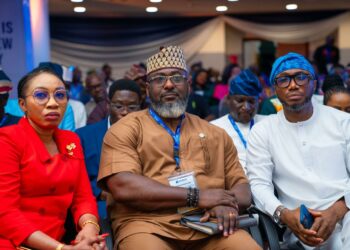The experts, comprising of the managing director/CEO of Luli, Olufemi Imoleayo Adeyeye; Managing Director, Cedarview Communication Limited, Olawale Owoeye and the CEO, TelCables Nigeria and West Africa, Fernando Fernandes, while speaking at Nigerian Peering and Interconnection Forum, in GRA, Ikeja, Lagos recently, noted that, the reason for low Interconnected cables in Africa, is that, not all cables (subsea and terrestrial cables) are interconnected.
“So, when cable faults or breakages occur, it can impact connectivity in different ways. When breakages do occur, they said, networks can be affected for a few hours or days before the internet traffic is rerouted.
“When it comes to cable breaks and rerouting of traffic, there is more diversity of routes on the East Coast, which means that for example, despite the disruption of the three cables in the Red Sea, it was possible to diversify traffic through international cables running through Djibouti,” the pointed out.
To address these challenges, they noted that, Nigeria must invest more in providing locally hosted switching and transmission digital infrastructure to cater to transactions within the country, even as local transactions should remain local to reduce dependency on international connections and minimise disruptions, saying, the recent fiber cuts revealed significant inefficiencies in Nigeria’s technology solutions.
On his part, the CEO, TelCables Nigeria and West Africa, Fernando Fernandes, urged Nigeria to improve Africa’s internet reliability and resilience during cable cuts by hosting content locally, educating regulators and policymakers on the importance of cross-border interconnectivity, and investing in internet infrastructure.
On building resilience and promoting collaboration in the subsea cable market, he said, recent events in the Red Sea and off the West Coast of Africa have once again highlighted the vulnerability of subsea cable infrastructure. Cable faults, whether caused by natural disasters or human activities, he said, pose significant threats to international communication networks.
“It is imperative for system owners to understand and address the need for enhanced resilience in subsea cable systems to mitigate the impact of such disruptions on their users. The reliance on undersea cables can, however, present major risks related to important public interests and have national and economic security implications. Protecting the security, resilience, and integrity of undersea cables is critical to global communications, economic growth, and development.
“Managing security risks, including from high-risk suppliers of undersea cable equipment and promoting best security practices for laying and maintaining these cables for secure and resilient global infrastructure is essential for the networks upon which the global economy relies,” he emphasised.
Undersea cable infrastructure, he said, includes not only the communication cables themselves but also any elements related to their construction, operation, surveillance, maintenance and repair, such as landing stations, software, and the terrestrial parts of the submarine cable connecting to them, repair centers, as well as the fleet of deployment, maintenance and repair vessels.
Hence, he said, the major subsea cable operators should design undersea cable infrastructure and services with resilience, redundancy, and security in mind, advising them, to build and maintain this infrastructure incorporating cybersecurity best practices that safely facilitate international communication.





